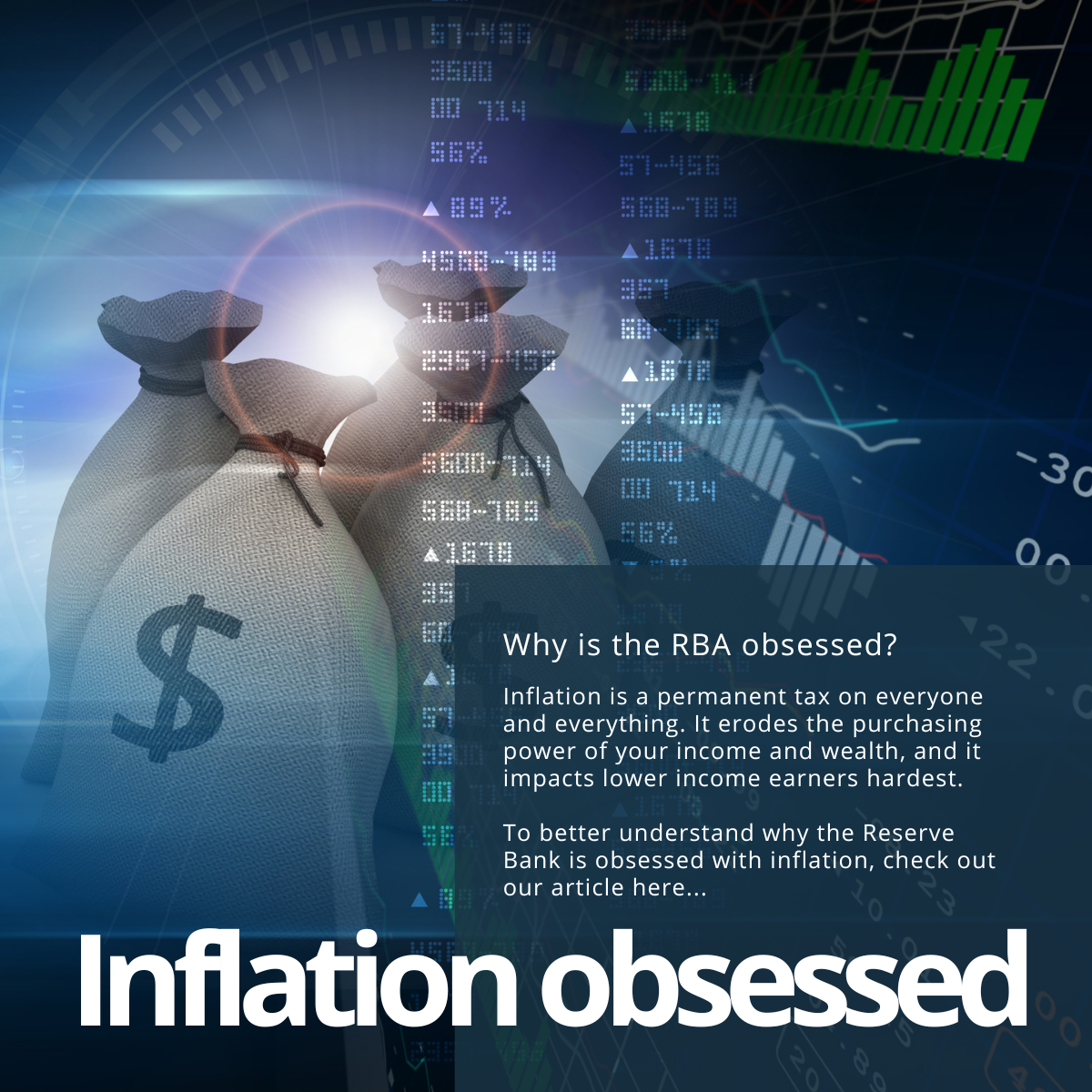Headlines and opinions are flying left right and center following the Reserve Bank of Australia (RBA)’s ninth rate hike in a row in February, and its governor, Phillip Lowe, asked to front a recent parliamentary committee hearing with a “please explain!”. We thought it a good time to dive into why it is that the Reserve Bank are so keen to tame inflation.

To understand why the RBA is obsessed with inflation, it’s important to understand that inflation is a permanent tax on everyone and everything. It impacts lower income earners hardest.
Whilst the cost of money, including mortgages and other loans, gets bumped up every time there is a cash rate rise announced by the RBA, despite this negative and uneven impact, importantly, it is a reversible and temporary impact.
The Reserve Bank uses an inflation target (Consumer Price Index of 2-3% on average over time) to help achieve its goals of price stability, full employment, prosperity, and the welfare of Australians1. Price stability, with low and stable inflation, contributes to sustainable economic growth. Inflation erodes the purchasing power of your income and wealth. If inflation is too high for too long, the value of real money is reduced, higher wage growth leads to ever-increasing prices, and higher unemployment, and spending and investment decisions may be distorted. Higher inflation can also lead to greater market uncertainty, with lower returns on investment and reduced international competitiveness.
When the inflation rate accelerates and stays high, it can create a wage-price spiral. If, for example, the underlying inflation rate were to rise to 5% every year for 4 years, this would require an increase in salary of 22% over that time, just to keep up. Current enterprise bargaining agreement (EBA) wage negotiations are based on a 3-year average underlying inflation rate. If the inflation rate spirals upwards, the average underlying rate also increases. If this happens, when future EBA agreements are negotiated, this puts upward pressure on wages that impact broad sections of the economy, such as transport and minimum wages. We saw this happen in the 1970’s when inflation got ahead of the Reserve Bank’s efforts to curb it, we experienced stagflation, a period of stagnant economic growth accompanied by persistently high inflation and a sharp rise in unemployment, and we were playing catch-up for a decade to try and get inflation back under control.
This is the situation the RBA is trying to avoid.
The information contained in this article is general information only. It is not intended to be a recommendation, offer, advice or invitation to purchase, sell or otherwise deal in securities or other investments. Before making any decision in respect to a financial product, you should seek advice from an appropriately qualified professional. We believe that the information contained in this document is accurate. However, we are not specifically licensed to provide tax or legal advice and any information that may relate to you should be confirmed with your tax or legal adviser.
1 https://www.rba.gov.au/education/resources/explainers/australias-inflation-target.htm
The post Why is the Reserve Bank obsessed with inflation? appeared first on Lifespan content feed.


